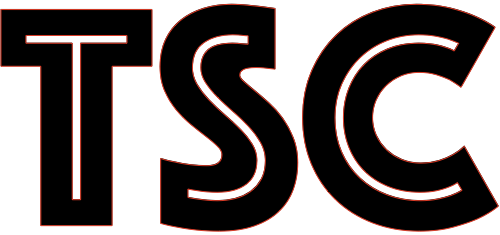
When you make purchases through our links we may earn a small commission.

Photo Credit: Garin Chadwick
Put It On Your Wall: CanvasOnDemand.com
Support thesmokingchair.com through Patreon.
Infectious diseases pose a significant threat to global public health, and their prevention and treatment are crucial aspects of healthcare. The world has witnessed the devastating impact of infectious outbreaks, from the Spanish flu to the recent COVID-19 pandemic. To effectively combat infectious diseases, it is essential to understand and implement basic methods of prevention and treatment. This article explores key strategies in both preventing and treating infectious diseases.
Prevention Strategies for Infectious Diseases
Vaccination: One of the most powerful tools in preventing infectious diseases is vaccination. Vaccines stimulate the immune system to recognize and combat specific pathogens, providing immunity against future infections. Routine vaccinations, such as those against measles, mumps, rubella, and influenza, have played a pivotal role in controlling the spread of infectious diseases.
Hygiene Practices: Simple yet effective hygiene practices can significantly reduce the risk of infectious diseases. Regular handwashing with soap and water helps prevent the spread of bacteria and viruses. Proper sanitation, including the safe disposal of waste, also plays a crucial role in preventing the transmission of infectious agents.
Vector Control: Many infectious diseases, such as malaria and dengue fever, are transmitted by vectors like mosquitoes. Vector control measures, including the use of insecticides, bed nets, and environmental management, help reduce the prevalence of vector-borne diseases.
Isolation and Quarantine: Isolating infected individuals and implementing quarantine measures for those exposed to infectious agents are essential for preventing the spread of diseases. This is particularly important during outbreaks to contain the transmission of the pathogen.
Health Education: Public awareness and education campaigns play a crucial role in preventing infectious diseases. Informing the public about the importance of vaccination, hygiene practices, and other preventive measures empowers individuals to take active steps in protecting themselves and their communities.
Treatment Strategies for Infectious Diseases
Antibiotics and Antiviral Medications: For bacterial infections, antibiotics are often prescribed to kill or inhibit the growth of bacteria. Similarly, antiviral medications are used to treat viral infections by targeting specific stages of the virus’s life cycle. However, misuse of antibiotics can lead to antibiotic resistance, emphasizing the importance of proper prescription and usage.
Antifungal Medications: Fungal infections, such as candidiasis and ringworm, are treated with antifungal medications. These drugs target the fungal cells while minimizing harm to human cells.
Antiretroviral Therapy (ART): In the case of HIV/AIDS, antiretroviral therapy is a critical component of treatment. ART helps control the virus, manage symptoms, and improve the quality of life for individuals living with HIV.
Supportive Care: In many cases, supportive care is essential for treating infectious diseases. This includes measures such as maintaining hydration, managing symptoms, and providing respiratory support when necessary.
Immunotherapy: Immunotherapy harnesses the body’s immune system to fight infections. This may involve the administration of immune-boosting substances or therapies that enhance the body’s ability to recognize and eliminate pathogens.
Prevention and Treatment Strategies for Respiratory Infections
Respiratory infections encompass a broad range of illnesses caused by various pathogens, including viruses, bacteria, and fungi. These infections are typically transmitted through respiratory droplets when an infected person talks, coughs, or sneezes. Here are general prevention and treatment strategies for respiratory infections:
Prevention Strategies for Respiratory Infections
Hygiene Practices: Regular handwashing with soap and water is essential to minimize the spread of respiratory infections. Alcohol-based hand sanitizers are an alternative when soap and water are unavailable.
Respiratory Hygiene: Encourage individuals to cover their nose and mouth with a tissue or elbow when coughing or sneezing to prevent the release of respiratory droplets.
Masking: Wearing masks, especially in crowded or confined spaces, helps reduce the transmission of respiratory droplets and protects both the wearer and those in close proximity.
Social Distancing: Maintaining physical distance from individuals who are not part of the same household can help minimize the risk of respiratory droplet transmission.
Ventilation: Ensure adequate ventilation in indoor spaces to reduce the concentration of respiratory droplets.
Treatment Strategies for Respiratory Infections
Antiviral Medications (if applicable): In the case of viral respiratory infections, antiviral medications may be prescribed to inhibit the replication of the virus.
Antibiotics (if applicable): Bacterial respiratory infections may require antibiotic treatment. However, antibiotics are ineffective against viral infections.
Supportive Care: Adequate hydration, rest, and over-the-counter medications for symptom relief (e.g., fever reducers, decongestants) can help manage the symptoms of respiratory infections.
Oxygen Therapy (if necessary): In severe cases that affect oxygen levels, supplemental oxygen therapy may be administered.
Ventilatory Support (if necessary): Critical cases may require mechanical ventilation or other forms of respiratory support to assist with breathing.
Corticosteroids (in specific cases): Corticosteroids may be used to reduce inflammation in the respiratory tract, particularly in severe cases of respiratory infections.
Additional Considerations
Isolation and Quarantine: Individuals with respiratory infections, especially those caused by contagious agents, should follow isolation and quarantine guidelines to prevent the spread of the infection to others.
Diagnostic Testing: Timely diagnostic testing can help identify the causative agent of a respiratory infection, enabling healthcare providers to tailor treatment accordingly.
By promoting these general preventive measures and applying appropriate treatment strategies, individuals can reduce the risk of contracting and spreading respiratory infections, contributing to overall public health and well-being.
How Long Has All This Information Been Around For?
The understanding of infectious diseases, their prevention, and treatment has evolved over centuries. Here’s a brief historical overview:
Vaccination: The concept of vaccination has been around since the late 18th century. Edward Jenner, an English physician, developed the smallpox vaccine in 1796, using material from cowpox lesions to protect against smallpox.
Hygiene Practices: The importance of hygiene practices has been recognized for a long time, but systematic approaches to hygiene in healthcare settings gained prominence in the 19th century with the work of pioneers like Ignaz Semmelweis, who advocated handwashing to reduce the transmission of infectious diseases.
Vector Control: Vector control measures, such as controlling mosquitoes to prevent the spread of diseases like malaria and yellow fever, gained attention in the late 19th and early 20th centuries.
Antibiotics: The discovery of antibiotics revolutionized the treatment of bacterial infections. Sir Alexander Fleming’s discovery of penicillin in 1928 marked the beginning of the antibiotic era.
Respiratory Hygiene and Isolation: Practices like respiratory hygiene and isolation have been part of infection control measures for many decades. The formalization of isolation procedures gained traction in the early to mid-20th century.
Antiviral Medications: The development of antiviral medications began in the mid-20th century. Early antiviral drugs like interferon were discovered in the 1950s.
Viral Vaccines: Viral vaccines, particularly for diseases like polio and influenza, were developed and widely implemented in the mid-20th century.
Public Health Education: Public health campaigns to educate the public on preventive measures have been ongoing, with increased emphasis in the 20th century and beyond.
Modern Advances (Genomics, Immunotherapy): Recent decades have seen advancements in genomics, allowing a better understanding of pathogens. Immunotherapy, harnessing the immune system to fight diseases, has gained prominence in recent years.
Global Response to Pandemics: The response to global pandemics, such as the Spanish flu in 1918 and more recently the COVID-19 pandemic, has highlighted the importance of international cooperation, rapid diagnostic testing, and vaccine development.
While the basic principles of preventing and treating infectious diseases have been known for a long time, ongoing research, technological advancements, and global collaboration continue to refine and expand our knowledge in this critical field.
The Last Word
Effective prevention and treatment of infectious diseases require a comprehensive approach that combines vaccination, hygiene practices, vector control, and public education. Additionally, the judicious use of medications, including antibiotics, antivirals, and antifungals, is crucial for treating infections. As our understanding of infectious agents evolves, ongoing research and global collaboration will play key roles in developing innovative prevention and treatment strategies to address emerging threats to public health. By implementing and adapting these methods, we can build a resilient healthcare system capable of safeguarding communities against the ever-present risk of infectious diseases.
You’ll get more articles like this – and our favorite promotional offers delivered straight to your inbox.
By submitting this form you agree to our terms and conditions. You can unsubscribe at any time.


GFYG: Halloween Costume Try-On Haul

See Through Lingerie Try-On Haul | Xmas part 2

Video: Rae Fitness MARIEMUR Bold Luxury Looks Try-On Haul

Trump Wrong on U.S. Agriculture Exports to China



Biden scraps Trump’s paint scheme for Air Force One

Trump Exaggerates China Trade Impact on Farmers

Guardians of Security: A Unified Front in Preventing Terrorism



Medicare for All: A Path to Universal Healthcare Access

MSNBC: Trump appointee sentenced to nearly 6 years in Jan. 6 attack



















